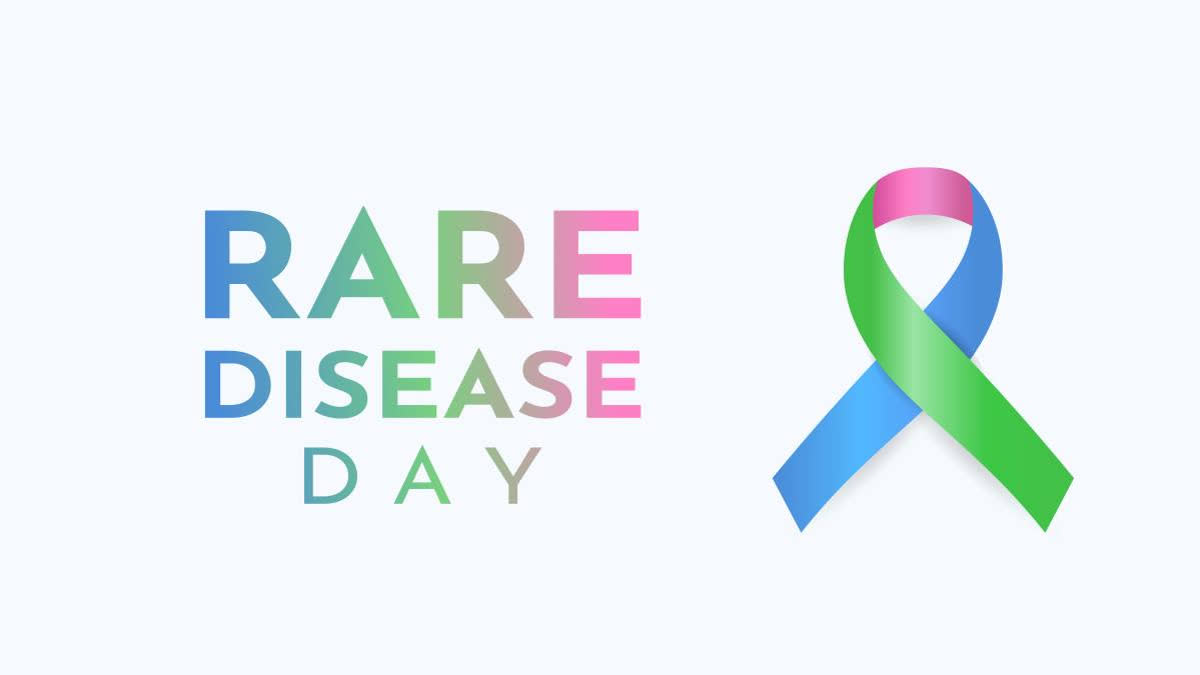Hyderabad: Rare Disease Day, an annual global day dedicated to raising awareness of rare diseases, is observed on February 29 every year. Rare Disease Day serves as a global showcase for the ongoing advancements in medical science. It was first observed in 2008 in just 18 countries.
However, by 2023, it has become an annual event, with events taking place in more than 100 countries.
What is a rare disease? - Worldwide 300 million people are believed to be affected by rare diseases worldwide. Because they only affect a small percentage of the population, rare diseases haven't always gotten the attention they deserve. What makes a disease rare is how prevalent it is—that is, the number of individuals living with it. The World Health Organization (WHO), defines a rare disease as one that strikes fewer than 65 per 1,00,000 people.
A rare disease is often genetic (72 per cent of the diseases are genetic). Other rare diseases could be the result of an infection or allergy. Some cancers are also rare diseases (almost 1 out of 5 cancers is rare).
How Many Rare Diseases Are There in The World? - According to a study, there are 6,172 unique rare diseases. 69.9 per cent (3,510 rare diseases) are exclusively paediatric onset. 11.9 per cent (600 rare diseases) are exclusively adult onset. 18.2 per cent (908 rare diseases) have onset spanning both paediatric and adult groups.
Worldwide rare diseases affect between 3.5 per cent and 5.9 per cent of the population. Anywhere between 263 million and 446 million people are living with a rare disease across the globe.
In India, rare disease affects around 72,611,605 people.
The Most Common Rare Diseases - Ehlers –Danlos Syndrome (EDS), Sickle Cell, Cystic Fibrosis, Duchenne Muscular Dystrophy (DMD), Haemophilia
Rare Disorders in Babies - Rare diseases in babies can manifest in a variety of ways like congenital abnormalities, metabolic syndrome, and genetic issues. These infections, albeit uncommon, can have catastrophic consequences if not treated, affecting multiple organs and resulting in lasting damage. Treatment options for unusual neonatal illnesses vary depending on the underlying cause and seriousness.
Different Effects of Rare Diseases: Some effects are genetic, while others have no genetic cause. Some genetic conditions are inherited, while others arise from new changes to the genes. Some affect people later in life, while some conditions affect people from birth. Some affect a particular body system, while others can cause cancer. Some are visible, while others are hidden from sight. Some have ways to treat the underlying condition, while others have treatments for symptoms.
The Universal Challenges Faced by Those Living with a Rare Disease:
- Delays in diagnosis are frequently caused by a lack of scientific understanding and high-quality information about the condition
- Access to treatment and care is hampered by the requirement for proper, high-quality healthcare, which creates inequality. Patients frequently suffer significant financial and social consequences as a result of this
- Initial misdiagnosis is widespread due to the wide range of ailments and relatively typical symptoms that can conceal underlying unusual diseases. It is also the case that symptoms vary not just between diseases but also between patients with the same illness
- Rare Disease Day provides an energy and focal point that enables rare disease advocacy work to progress on local, national and international levels



